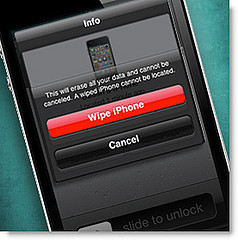Richard Wollenberger, IT Director at Parents as Teachers, discusses his thoughts about the mobile device management (MDM) policy they implemented in their organization. He also shared a sample Personal Mobile Policy that can be customized by other organizations.
1. Tell us about yourself and your IT career.
I have been in IT since 1987 (my second career, my first was in professional theater) I have worked in sales, pre-sales support and as a network engineer for a computer reseller, then as “the IT guy” for a health & welfare, compensation, and benefits consulting firm. The company got bought twice in less than 12 months and I had an interesting time navigating through to find myself working for an operations director with ethics I couldn’t stand and I left the company.
I went to work as the second LAN admin for an ad agency, and two years later was promoted to IT & Facilities Manager. I left there in 2003 and spent about 2 ½ years as a contractor/sub-contractor before I came to Parents as Teachers. Initially I was hired as the IT Manager in 2006 and promoted to IT Director in 2009.
I now manage a staff of five in the IT department. I have designed networks, opened and moved offices, managed people, budgets, and technology since 1994, and thoroughly enjoy the process of making “it” all work.
2. Tell us more about Parents as Teachers.
Parents as Teachers is the trusted resource providing a proven home visiting model for the most respected organizations and professionals who meet the evolving needs of families. Our work with the professional community helps young children grow up healthy, safe and ready to learn.
Our internationally recognized network of organizations and professionals supports hundreds of thousands of families in all 50 states as well as many other countries through a proven parent education model featuring intimate, in-home visits with parents and children.
3. Why did you decide to create a Mobile Device Management (MDM) policy?
There need to be records and policies to effectively manage any organization. Smaller ones can afford to be more relaxed in their rules, but the rules still need to be documented. I wasn’t as concerned about BYOD until one of our employees wanted to connect a SECOND device to the system and I realized I wasn’t sure how I would know what to do if one device was lost or stolen, but she still had the first one. I couldn’t just lock her account. I needed to keep track of what devices each person was connecting. We keep these policies in each employees personnel file to have available should they leave the organization.
4. How have staff responded to it?
Most want to connect their device, so they sign our policy without too much concern. We have had two or three people decide to not connect their phone. Since no one’s job requires it – well, maybe except mine – this isn’t an issue for us.
5. Why do you think it’s important for nonprofits to have a similar policy?
Technology must be managed as both an enabler of productivity and as a risk. The risks are trade-offs between ease of use, ease of administration, and access to data. Some organizations have data which is extremely sensitive and can’t be exposed outside the office. Their risk is considerably higher than ours.
6. What are some of the challenges related to the policy?
Keeping track of who signed it was a problem when we started. Now I keep a simple spreadsheet of information with the date signed, by whom, for what device, with what OS and the version. I also have a place to put a date if/when an employee leaves.
7. Where are things going in terms of BYOD and MDM?
More flexibility for users always has to be balanced with being able to support staff effectively, and appropriate expectations must be set. In terms of smartphones and tablets, this is a little easier, especially in a small organization. Laptop access changes the ballgame, and so does the size of the organization.
8. Do you have any resources you can share regarding MDM and BYOD?
Sure, here’s a link to a sample MDM policy that can be customized for use in other organizations.

